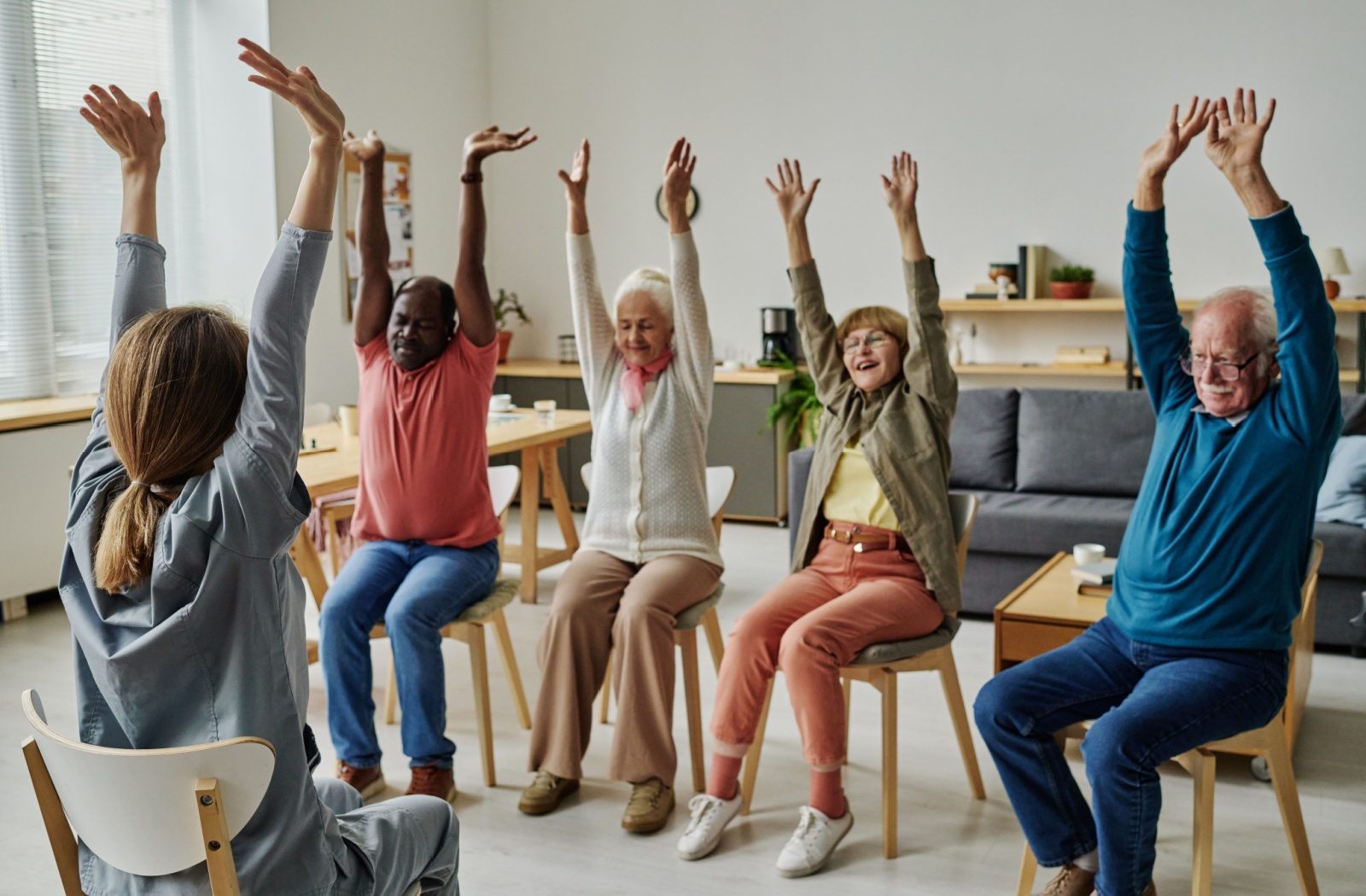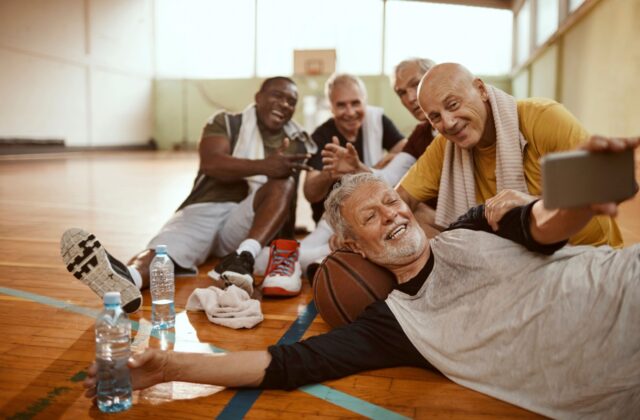Physical activity has long been associated with better health, but its impact becomes even more paramount as we grow older.
Effective exercise doesn’t have to be strenuous. It can be as fun as gardening or walking with a friend. The key is to stay consistent by finding joy in movement!
To promote healthy well-being, older adults are encouraged to engage in:
- 150 minutes of moderate-intensity aerobic activity or 75 minutes of vigorous-intensity aerobic activity per week.
- Strength training at least twice a week.
- Activities that promote balance and mobility at least once a week.
How Physical Activity Promotes Healthy Aging
Routine physical activity forms the foundation of healthy aging. It helps alleviate age-related declines in muscle strength, bone density, and cardiovascular health.
Physical Benefits of Regular Activity
Consistent exercise can help maintain and improve various bodily functions, that decline as we grow older if we don’t stimulate and engage these areas. Other physical benefits include:
- Enhanced mobility and strength: Regular physical activity helps maintain muscle mass, flexibility, and joint health, promoting better mobility and reducing the risk of falls.
- Improved heart health: Cardio activities strengthen the heart, lower blood pressure, and reduce the risk of cardiovascular diseases.
- Increased bone density: Weight-bearing exercises, help build and maintain bone density, reducing the risk of osteoporosis and fractures.
- Better sleep: Exercise can promote better sleep quality.
- Energy boost: Routine physical activity boosts energy levels, reduces fatigue, and increases stamina.
Mental Health Benefits
Physical exercise isn’t just good for the body, it’s also incredible for the mind.
- Reduced stress and anxiety: Exercise releases endorphins, known as “feel-good” hormones, which help reduce feelings of stress and anxiety, promoting a sense of happiness and relaxation.
- Improved brain health: Regular exercise helps stimulate cognitive function, including enhanced memory, attention, and problem-solving skills.
- Improved self-esteem: Regular physical activity can improve body image, self-confidence, and overall self-esteem.
- Social engagement: Participating in group activities or team sports can provide opportunities for social interaction, fostering a sense of community.
Types of Physical Activities for Older Adults
Variability of activities in your fitness routine provides a more balanced workout targeting and stimulating different muscle groups. This also keeps your workouts more engaging, making it easier to stick with your routine.
Always pay attention to your body’s signals. A challenge is fine, but pain or discomfort isn’t. You can always modify movements or adjust the intensity.
Notice how you feel during and after each session, and take breaks as needed to prevent exhaustion, injury, or losing motivation altogether.
Aerobic Physical Activity
Better known as cardio, aerobic exercise includes activities that elevate your heart rate and breathing. This form of exercise improves heart health, increases lung capacity, and builds overall stamina.
Cardio activities are adaptable and can be broken into smaller sessions, making it easier to meet your weekly fitness targets. We can break moderately-intense cardio activity down to 50 minutes a day 3 times a week, or 30 minutes a day 5 days a week.
Moderate-intensity exercises, slightly increase your heart rate and cause light sweating, such as:
- Brisk walking
- Dancing
- Gardening
- Leisurely swimming
- Cycling at a comfortable pace
For those seeking a greater challenge, vigorous-intensity activities require more effort and result in heavier breathing and more sweating.
A helpful way to gauge the intensity of your activity is with the “talk test”. During vigorous activity, speaking becomes harder, and you may only manage a few words before needing to pause for breath.
These exercises push your limits, raising your breath and heart rate for a more demanding workout:
- Jogging or running
- Swimming laps
- Cycling at a quicker speed
 Strength Training
Strength Training
Strength training uses resistance, body weight, or weights to enhance muscle strength. This is necessary for offsetting the natural loss of muscle mass and bone density that happens as we grow older.
Strength training plays a significant role in building mobility, reducing fall risks, and helping individuals maintain their independence as they grow older.
- Bodyweight exercises: Moves like squats, lunges, and push-ups are excellent for targeting major muscle groups. They require no extra equipment, making them relatively accessible.
- Traditional weight lifting: Using dumbbells, barbells, or other weights, this method is ideal for improving overall body strength by engaging large muscle groups.
- Pilates: This focuses on low-resistance movements to improve core stability, balance, and flexibility. It’s effective for toning the body, alleviating back pain, and enhancing posture.
- Barre: By relying on small, precise movements and light weights, barre helps with muscle toning and flexibility in a controlled manner.
- Chair exercises: Designed for people who need extra stability, these supported routines are great for building muscle tone and strength while promoting safety.
Balance Activities
Promoting balance becomes increasingly important as we grow older, as it plays a key role in reducing the risk of falls and related injuries.
Incorporating these activities into your weekly routine can be as simple as standing on one foot while brushing your teeth or washing dishes.
Adding balance-focused exercises to your fitness routine helps improve stability, coordination, and flexibility. They also contribute to better posture and alignment, reducing physical strain.
- Standing on one foot: Balance on one leg for a specific amount of time, switching between legs to practice even stability.
- Side leg raises: While holding onto a sturdy object for support, lift one leg to the side to strengthen the hips and promote stability.
- Tai chi: A gentle exercise that focuses on low-impact movements and controlled breathing, emphasizing coordination and balance.
- Yoga: By holding various poses, yoga enhances balance, flexibility, and strength.
Connect With Community
Staying active is a healthy component of overall well-being. Everyone, regardless of age, can reap the benefits of physical activity.
Finding joy in movement becomes easier with a shared community. Connect with our team at La Vida Llena to learn more about our wellness program.


